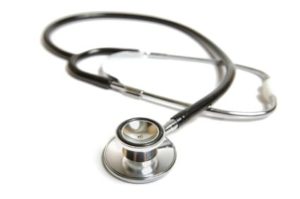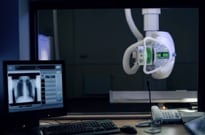Sometimes, an injury or illness is so severe a visit to the doctor’s office isn’t the right choice. Your primary care physician may know your health history, but he or she is not equipped to provide emergency services and must keep up with scheduled appointments.
Exceptional Health Services is the choice for 24-hour emergency care. We have four operational trauma facilities (Harlingen, East Chase, Dow Emergency – Livingston, and Excellence ER – Sachse) and one more in Brownsville on the way; each emergency center can quickly respond to life-threatening emergencies, including critical injuries and illnesses.

Trained, board-certified emergency medicine physicians are present at each location, along with a full-time attending physician—24 hours a day. Each emergency trauma center includes state-of-the-art imaging systems (x-rays, CT scans, ultrasounds), cardiology equipment, and laboratory services. If a severe burn, bone fracture, or symptoms of a heart attack or stroke leave you with little time to get to your primary doctor, Exceptional Emergency Center will provide immediate professional care.
A trip to the Emergency Room (ER) can be a life-saving alternative to visiting your Primary Care Physician (PCP). Primary doctors are often available only by appointment. If the situation is life-threatening, they may not be able to fit you in on time. When it comes to routine and emergency medical care, there are distinct differences.
Difference Between a PCP and the ER
A PCP is the best choice for meeting your regular health care needs. Many physicians set aside time for same-day visits if patients have minor illnesses or injuries. For immediate care, they may recommend visiting the ER or urgent care center. If your needs are related to general health care or your medical situation does not constitute an emergency, a doctor can use your health history and, if necessary, coordinate care services with healthcare specialists.
Your physician is primarily tasked with routine health monitoring. Baselines, established from yearly checkups, help them detect small changes in health that can indicate medical issues. They have a record of your medications and what has worked in the past, and they know how any new medications will work best with what you currently take. Treatment for chronic health issues like hypertension and diabetes is the job of your PCP, and they’re available should you have something minor, such as a cold or bronchitis.
When a primary care physician is a better idea:
If your situation is not a true emergency, an appointment with your PCP or a same-day visit is better. Besides, a visit to the ER is an expense worth avoiding if the trip isn’t necessary. Visit your primary care provider if you experience a:
- Cold, cough, or flu
- Mild fever
- Minor asthma attack
- An allergic reaction
- Insect bite
- An ear infection
- Urinary tract infection
- Minor burn
- Small cut or laceration
- Sore throat
- Pink eye
- Minor sprain or strain
In a more urgent situation, there are two options. An ER is equipped to assess your medical condition immediately and conduct imaging scans, cardiology workups, and other tests. Emergency treatment is available at all times to address acute symptoms and life-threatening emergencies such as heart attacks, strokes, and trauma. However, many ERs have long wait times. Busy facilities must prioritize patients through triage or tending to people in the order of the severity of their symptoms.
Urgent care centers are useful for a range of illnesses and medical issues. If your symptoms aren’t that severe but require more prompt attention than a booked PCP can provide, a visit to urgent care can result in a diagnosis and resolution. Physicians at a clinic can address common cold symptoms, rashes, nausea/vomiting, minor burns, migraine headaches, minor cuts, and dehydration.

When a primary care physician is a better idea:
If your situation is not a true emergency, an appointment with your PCP or a same-day visit is better. Besides, a visit to the ER is an expense worth avoiding if the trip isn’t necessary. Visit your primary care provider if you experience a:
- Cold, cough, or flu
- Mild fever
- Minor asthma attack
- An allergic reaction
- Insect bite
- An ear infection
- Urinary tract infection
- Minor burn
- Small cut or laceration
- Sore throat
- Pink eye
- Minor sprain or strain
In a more urgent situation, there are two options. An ER is equipped to assess your medical condition immediately and conduct imaging scans, cardiology workups, and other tests. Emergency treatment is available at all times to address acute symptoms and life-threatening emergencies such as heart attacks, strokes, and trauma. However, many ERs have long wait times. Busy facilities must prioritize patients through triage or tending to people in the order of the severity of their symptoms.
Urgent care centers are useful for a range of illnesses and medical issues. If your symptoms aren’t that severe but require more prompt attention than a booked PCP can provide, a visit to urgent care can result in a diagnosis and resolution. Physicians at a clinic can address common cold symptoms, rashes, nausea/vomiting, minor burns, migraine headaches, minor cuts, and dehydration.

Urgent care is an option when your PCP may not be immediately available, but medical attention is needed. A cut, sprain, or sinus infection is typically not considered an emergency, so a visit to the ER isn’t warranted. Plus, you’ll spend less than what an emergency facility would charge.
Reasons to Go to the Emergency Room
Fever, pain, vomiting, or urinary tract symptoms don’t usually mean you have an emergency. However, there are distinct cases in which a trip to the ER is warranted. These include:
- Sudden chest pain, accompanied by shortness of breath, sweating, or pain radiating to your arms, neck, or jaw.
- Difficulty breathing due to asthma attacks, upper respiratory infections, or pneumonia.
- Head injuries accompanied by fainting or confusion.
- An injury to the neck or spine with a loss of feeling or mobility.
- Broken bones that break through the skin, which might require immediate, life-saving surgery.
- A severe cut that bleeds profusely or breaks the skin enough so muscles, tendons, or bones are visible.
- A limb is severely damaged, burned, broken, or amputated.
Seizures, shock, ingestion of objects, severe burns, unconsciousness, choking, electric shock or lightning strike, smoke or fume inhalation, poisoning, and suicidal thoughts are reasons to go to the ER as well.
However, there are a few conditions that may or may not warrant a trip to an emergency facility such as our Texas injury center. The severity and a complete set of symptoms will help you decide what decision to make.
When to go to the ER for abdominal pain – There are many reasons for abdominal pain, including stomach flu or a pulled muscle. However, more serious issues such as appendicitis, a gallbladder problem, or infection may be present if the pain is severe. Intense localized pain in the lower right part of the abdomen may indicate a problem with the appendix. If the pain is in the upper right region, the gallbladder may be the culprit. Also, head to the ER if the onset of discomfort is sudden and severe, there’s blood in your stool, or you can’t keep down food or fluids.
When to go to the ER for back pain – Many people experience back pain on a regular basis. If it occurs as a direct result of an injury, there may be spinal damage. Another sign of an emergency is if the pain is accompanied by loss of bladder or bowel control. Pain directly on the spine requires an x-ray or CT scan to check for bone damage, slipped discs, arthritis, or kidney problems. A kidney infection may manifest as lower back pain as well.
When to go to the ER for a fever – Illnesses and infections that cause fever are often treated with over-the-counter medications, but if you are also extremely lethargic, lose mental focus, or have head or neck pain, the situation may be more serious than you realize. A severe headache with a fever may indicate signs of meningitis, an infection of the soft tissue surrounding the brain and spinal cord.
When to go to the ER for vomiting – Vomiting, although unpleasant, is usually not an emergency. Go to the emergency room if there’s also severe stomach pain, blood, or the vomit is dark green (a possible sign of a bowel obstruction). If you can’t keep anything down, dehydration is a risk, so immediate care is important.
When to go to the ER for UTI symptoms – If the symptoms indicate kidney involvement, visit the emergency room. Also, urinary tract infections tend to be more severe in infants, children, and the elderly, so emergency care is a good idea. Most of the time, your PCP can treat a UTI, but signs of an emergency include UTI symptoms with fever, lethargy, or poor appetite. The consequences can be severe if the bacteria get into the bloodstream; an infection can also cause permanent scarring inside the urinary tract.
In general, infections can usually be treated at home, but, if you experience lethargy, confusion, fluid intolerance, or have low blood pressure, you may need emergency care, fluids, and antibiotics. Other reasons to visit the ER include having blood in your stool or urine with fever, rash, fatigue, or intense pain. Numbness in the legs, a loss of bowel function, slack facial muscles, and other losses of function can be signs of stroke or physical trauma, so emergency care should be sought immediately.
U.S. ER Statistics
According to the U.S. Centers for Disease Control, one in five Americans visited an ER in 2011. About 35 percent of visits between 2000 and 2010 involved an x-ray, as injuries are the most common reasons adults visit the emergency room. Advanced imaging was on the increase, as well, going from 5 percent to 17 percent of emergency room visits during that time.
Other statistics involving those who sought treatment at an ER in 2009-2010 include:
- 27% of children in ERs were treated for cold symptoms (the most common type of visit).
- 16% of patients were admitted to the hospital from the ER.
- 2% of patients left without completing their visit and receiving care.
- 81 percent of patients were discharged, pending follow-up care.
- Fewer than 1% involved the patient’s death.
- 59% of visits resulted in at least one drug being prescribed.
Among non-injuries, abdominal pain is the most common reason for adult ER visits, according to the CDC’s 2014 National Hospital Ambulatory Medical Care Survey. Chest pain, cough, fever, headache, back symptoms, shortness of breath, and pain were other top triggers for emergency room visits in the U.S.
In 2014, there was a total of 141.4 million visits, which, according to the CDC, accounts for 45.1 out of every 100 persons. There were 40 million injury-related visits and 11.2 million visits that resulted in the patient being admitted to a hospital. About 1.8 million visits required admission to a critical care unit.
There are many reasons to go to the ER for pain, although the statistics show that most emergency department visits end well for the patient. Still, an emergency facility with a pain center is very useful if you do not know the cause of your discomfort. Sometimes, it’s fine to wait until your PCP is available, but many instances are time-sensitive. For example, if you have chest pain or severe pain in the head, abdomen, or anywhere else, there may be little time to waste.

Visit Exceptional Emergency Center for Immediate State-of-the-Art Care
For the best emergency center and trauma facilities in Texas, Exceptional Emergency Center is available 24 hours a day. We are equipped with imaging and lab services, advanced imaging technology, and cardiology systems to treat the most urgent of emergency cases. Board-certified physicians and experienced nurses are on call. Visit one of our four 24-hour emergency care locations in Texas as soon as the need arises.
Sources
